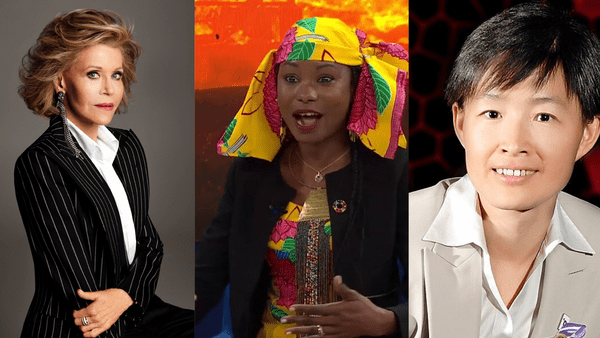From sinking islands to drought-ridden savannas, women bear an outsize burden of the global warming crisis, largely because of gender inequalities. In many parts of the world, women hold traditional roles as the primary caregivers in families and communities. The UN estimates 80% of those who have been displaced by climate change are women.
Today, across the world, from boardrooms and policy positions to local communities, from celebrities to activism, women everywhere are using their voices to take leadership and call for action on climate change. Discussed below the top 5 women who are calling for action on climate change.
Hilda Heine
Governance
Climate change is literally at Marshall Islands President Hilda Heine’s doorstep. “Around my house, I have had to build a seawall,” she says, “because there is water coming over from the shoreline.” The sea is encroaching quickly on President Heine’s low-lying Pacific island state, and over the past four years, the government has had to put in place adaptive measures like building coast–protection systems and seawalls, she says. Heine has taken to the international stage to share the story of her country and the difficult decisions her compatriots are facing, including the possibility of relocating. She chairs the Climate Vulnerable Forum, a group of some 50 countries particularly in peril from climate change, despite having contributed a pittance to atmospheric greenhouse gases
Jane Fonda
American actress and activist
Jane Fonda has been a climate change advocate for a long time. The star has been arrested four times so far for leading rallies in the US about climate change and calling for greater resources and government support for the issue. Not only is she putting herself at the front of the rally for change, Fonda has pledged that the red coat she has been wearing to the weekly marches will be the last piece of clothing she ever buys in a bid to be more sustainable. “We cannot leave it to young people to fight this fight for their future by themselves,” she said of her fight for climate change awareness.
Hindou Oumarou Ibrahim
Indigenous Activism
Hindou Oumarou Ibrahim, from the Mbororo pastoralist community in Chad, has spent the past 12 years working to bridge the gap “between the international decisions [on climate change] with the reality on the ground,” she says. “I want to tell people what it is like in my country.”Traveling the nation to meet with indigenous groups, she kept hearing how much the environment was changing. “Each year I am seeing resources shrinking, and my people are struggling for survival,” says Ibrahim. Leading up to the historic 2015 climate-change meetings in Paris, she was a key leader among indigenous groups that successfully lobbied to have their rights recognized, and she was selected to speak at the signing ceremony of the accords.
Wu Changhua
Business and advocacy
Back in 1990, when Wu Changhua first started documenting environmental issues as a young photojournalist in Beijing, she thought it was “all about planting trees and keeping the streets clean.” Few policymakers in China knew any different, prioritizing unbridled growth at any cost. As she moved into business and advocacy, Wu learned fast, and her patient cajoling helped shepherd the rehabilitation of the world’s No. 2 economy from an environmental pariah to a champion of green issues on the global stage. It involved tact. While international institutions publicly scolded China for its belching factories and toxic waterways, Wu worked with officials behind the scenes to help infuse global standards into industry and urban planning. “For a long time we were ignored, marginalized, but now we’re pretty much mainstream,” says Wu. Now CEO of the Future Innovation Center, Wu continues to advise governments and corporations on sustainability strategy and the low-carbon economy.
Greta Thunberg
Youth Activism
In 2018, then 15-year-oldGreta Thunberg started a school strike in Sweden to draw attention to the climate crisis, and since then her message has spread despite her avoidance of air travel because of its high carbon emissions. Young people across the world have followed her path, striking and marching to make clear to adults and decision-makers that this is a true emergency. “We are children saying, ‘Why should we care about our future when no one else is doing that? And why should we bother to learn facts when facts don’t matter in this society?’ In late August, she landed in the U.S. after a 15-day boat trip across the Atlantic, and she has plans for a months-long tour of the Americas with a zero-carbon footprint.

